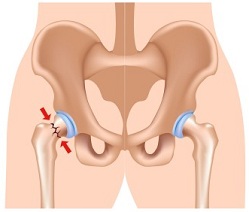Stress fractures are typically experienced in the foot or sometimes in the lower leg, so they are obviously of serious concern for runners.
Every time you move a leg out in front of your body and take another running step, you are forcing your feet and legs to absorb the pressure created by catching your body weight and holding your body upright.
The bone can easily be affected, especially if you are not using proper running form or are running too much and overstressing your joints and muscles.

It may seem like a small injury when you read the explanation of what it is below, but it is actually as serious injury that all runners should know about. This is the type of injury runners fear, since it can take them out of the running game for more than a month.
You cannot just run through it or work it off because it will grow worse and become a complete bone break!
Stress Fractures Explained
Have you ever dropped a coffee mug to the floor? You may have noticed that it might not break, but may develop a small crack on the outside layer of the cup. This is exactly what a stress fracture is, except it is a slight crack on the outside of a bone.
It isn’t a complete break of the bone and it doesn’t instantly stop you from running or walking, but it has to be taken very seriously.
It can occur in any bone of the body, but in runners they are often found below the knee, in the foot, or sometimes in the thigh. The slightest crack in the bone could become a more serious problem, so all runners must be aware of this risk.
Common causes
Runners can develop stress fractures as a result of overtraining. For instance, if you suddenly add twenty miles a week to your running schedule you could overwork your muscle and joints, and that can negatively affect your bone as well.
This is why runners are advised in most cases to gradually increase miles over time, rather than suddenly training in overdrive.
Sometimes they are a simple result of your body form or the style of running you perform.
If you are continuously getting these problems, then you may want to talk to a doctor to rule out problems with your bone or other medical problems.
You can also work on improving form or trying another running style to see if the injuries decrease.
Some runners experience stress fractures because they simply are not consuming enough calcium in their diets.
Treatment Options
Stress fractures can be identified by soreness, stiffness, and pain on a bone. This may start slowly and get worse, or it may hurt right from the start.
The pain will be localized to the bone that has been cracked, so it is not a pain that is going to spread throughout a muscle or region of the body.
The pain may grow with time as the crack spreads, but if it is taken care of that should not happen. A doctor will give an x-ray or sometimes a bone scan to verify that there is a fracture and which bone is affected.
You have to stay off the bone and stop running to allow the stress fracture to heal.
Some doctors may approve patients to run in a swimming pool or do other forms of exercise that do not place weight and stress on the affected bone, but for the most part you will need about six weeks to heal. A cast may or may not be needed during recovery.
How to Prevent
The things you do to protect your muscles from being overworked will also protect your bone from stress fractures. Do not make drastic increases in the miles you run each week. Increase gradually so your body has a chance to adjust without tremendous shock and stress.
Make sure you are wearing the right running shoes for your feet and that they are not worn out. You should be replacing your shoes frequently if you run a lot of miles each week. Running shoes should be purchased for functional protection, not just style.
Finally, have your gait checked to see if your basic running form and style may be putting your bones at risk for fractures. It never hurts to check!
Do you want to get more tips on how to prevent and cope with running injuries? You should give Running Doc’s Guide to Healthy Running, written by Lewis Maharam, definitely a try!
Recommended further reading:
- How to prevent achilles tendonitis
- How to prevent ankle sprains
- How to prevent blisters
- How to prevent DOMS
- How to prevent hamstring injuries
- How to prevent muscle cramps
- How to prevent overtraining syndrome
- How to prevent plantar fasciitis
- How to prevent shin splints
Return from Stress Fractures to Running Injuries
Return to Marathon Training Tips home
